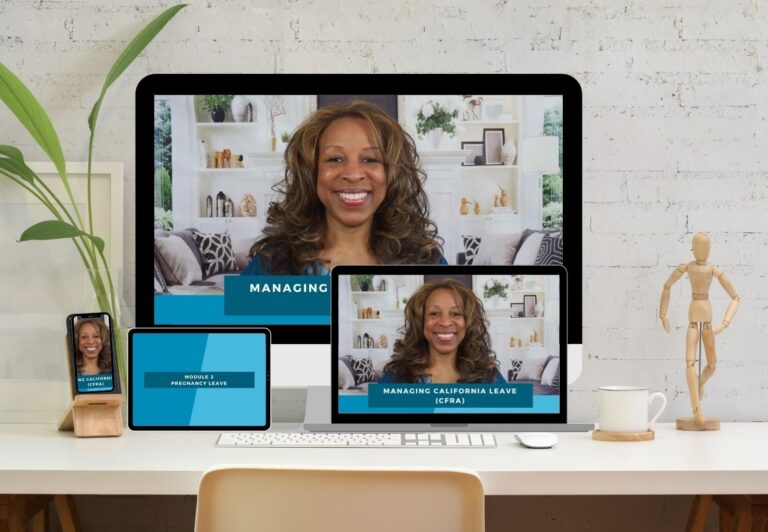Stay Connected While Apart (Onboarding Remote Employees)

By VICKY BROWN
Now that remote working seems like it’s here to stay – it brings up a new issue for employers. How do you bring on a new person, for a remote position, and make sure they get fully incorporated in the company and culture as quickly as possible.
It’s a bit more complicated when you aren’t seeing the person every day, and they aren’t having casual interactions with new colleagues and building relationships. It’s a fact, the distance issue just makes things a bit more complicated.
So, first off – I think it is a really good idea to have personal contact with any new hire you are bringing on. Unfortunately, scammers targeting remote jobs is on the rise. They can use deepfakes and/or stolen personal information to apply for a remote position. And then, once they are hired, you give them access to company information and system, accounts, passwords and other data – and they have a little scammer’s party. Raiding your company at will, with verified credentials you provided.
So again, I say – you kind of have to meet them in person. It may be burdensome, but maybe fly them in for the final interview. It’s far better to be a bit inconvenienced in the beginning, than to have to clean up the mess left behind by a scammer.
Alright – scammers aside – here are 10 tips you should consider to fully integrate a new remote employee.
Be welcoming – as I’m sure you are naturally welcoming to all your new team members, but you have to expand your thinking when it comes to new virtual team members. Send them swag… Uh, I mean a Welcome Package. You can include things like company branded t-shirts mugs etc. I’ve even seen custom reaction cards – they’re a set of physical cards with different expressions or phrases like Agree or Great Idea. The meeting attendees can use them to share their reactions in real time.
And there are all sort of other ideas – Emoji paddles, or Photo booth props – be creative!
“…Make sure your new hire has access to reliable, expert, remote IT support – they can troubleshoot technical issues and provide guidance on software and hardware systems. Make it as easy on the team member as possible.“
Next, be sure to provide a virtual introduction to the team. Introduce new hires to their colleagues – you could use ice breaker events, like virtual games, to add an element of fun. And be sure to encourage questions – and don’t make it a ‘corporate’ event, in fact, let someone else pull it together. It should be more fun than work.
On a bit more practical side – make sure they have good equipment and great remote IT support. Nothing is worse than starting a new job, and not having the tools you need to get the job done. Make sure your new hire has access to reliable, expert, remote IT support – they can troubleshoot technical issues and provide guidance on software and hardware systems. Make it as easy on the team member as possible.
Now on to all things communication. It’s going to be the backbone of creating a good relationship, so think communication, communication, communication – in all it’s forms.
Make sure you’re communicating regularly. Keep in touch with them through regular virtual meetings (and yes, I know it’s trendy to complain about meetings, but they can be a really valuable part of your communication strategy – provided they are done right). Check out the Season 2 episode – Death by Meeting to get some pointers. Now, virtual is best, but don’t forget old fashioned eMails or phone calls as well. You just want to make sure your new employee feels supported and stays informed during the onboarding process.
And take advantage of the tech tools that are available. Use virtual whtieboards such as Mural or Trello, to help everyone collaborate with their teams on projects, and brainstorm ideas remotely.

So, one of your employees just told you that she’s pregnant. Feeling overwhelmed, with no idea where to start? After all, HR just got dumped on your plate. It’s not your zone of genius, and you don’t want it to be.
Managing California Leave is your answer. It’s an easy to understand course, that explains what the various leave programs are – without the HR gobbledy gook. And it gives you a clear step by step guide that walks you through the process of putting someone on leave
Yep, you get all the forms, notices and documents too. Everything you need to do it right and do it fast. After all, you don’t have all day – you have other things to do!
Use the link to get an Insider’s sneak peek And don’t worry – you’ve got this. And we’ve got you.
And don’t forget the more personal interactions. Remember, your new hire won’t have the opportunity to have casual run ins with senior management. So those interactions will have to be more formalized. Schedule virtual one-on-one meetings with key stakeholders, folks like managers and executives. I’ve found the connecting new hires with leadership gives them a much more fully rounded vision of the company, and where it’s going.
And as a bonus – it let’s the new hire know that they are important to the company. Not just another body.
Make sure you’re clear on expectations and goals; and that you provide sufficient training. You can create interactive training modules that incorporate quizzes, games and other elements that will help new hires learn and retain the information more effectively. And remember, training isn’t a one and done exercise – continuous learning…that’s the ticket.
And as they are going through the onboarding and training process, don’t forget to celebrate the milestones – like completing a training module or successfully completing a project. It will help keep them engaged and motivated. Because – well, who doesn’t like to have a celebration?
Alright, you’ve created this masterpiece of onboarding for your remote new hires. And I’m sure it’s a thing of beauty. But the truth is, you can’t determine that in a vacuum. Ask for feedback. That’s right – make sure you have baked a feedback loop into the process. Ask them about their virtual onboarding experience. Who knows – you might be able to use their input to refine and improve the process going forward.
Spread the word
MORE HUMAN, MORE RESOURCES
310.308.7680 option 1
hello@idomeneoinc.com

